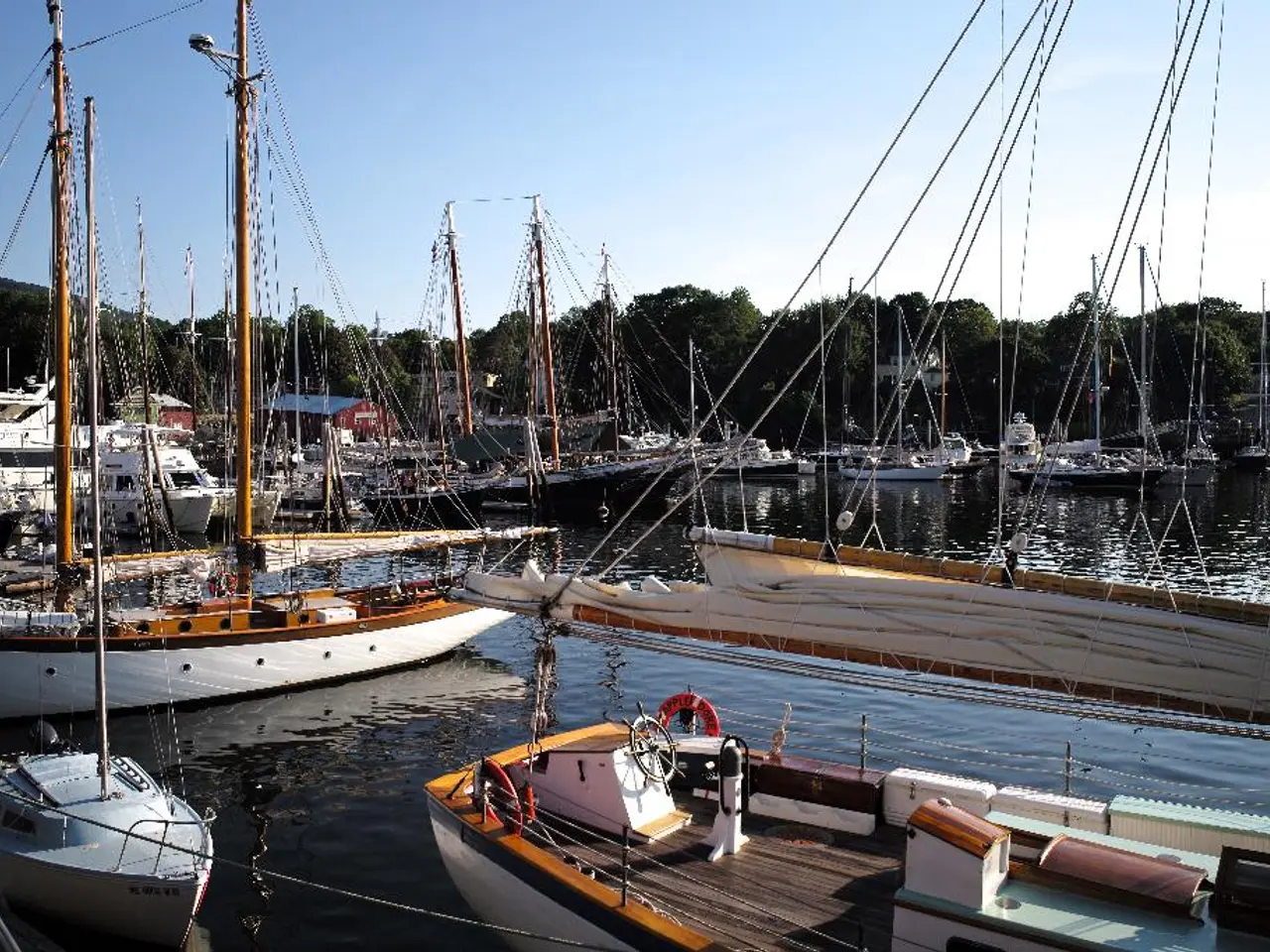Tragedies in the Red Sea: The Persistent Drowning of Migrants and its Underlying Causes
=================================================================================
In the Eastern Route from Djibouti to Yemen, migrants face extreme dangers as they cross the Bab al-Mandab Strait. This narrow and strategically important waterway, at the mouth of the Red Sea, is fraught with perils due to strong tides, winds, waves, reefs, and heavy maritime traffic from large tankers.
Many migrants attempting this crossing are from Ethiopia and other parts of the Horn of Africa, hoping to reach the oil-rich Gulf states, particularly Saudi Arabia and the United Arab Emirates, for better employment opportunities. However, the journey is fraught with danger.
Smugglers often overcrowd small fishing vessels, forcing migrants to jump overboard or throwing them into the water, which substantially increases drowning risks. In 2024 alone, over 558 deaths were recorded on this route, most from shipwrecks. Last weekend, at least 92 people drowned when a vessel they were using to cross the strait sank.
The Bab al-Mandab Strait also poses risks due to intense international shipping traffic, complicated navigation conditions, and turbulent seas. Captains have become wary of helping migrant boats in distress due to numerous cases of piracy.
Despite these dangers, the number of migrants attempting this journey has increased. The reasons include economic desperation and lack of employment opportunities in the Horn of Africa, particularly Ethiopia. The perception of Yemen as a transit country en route to the wealthy Gulf states, limited safer and legal migration routes, persistent conflict and instability in Ethiopia and neighboring regions, and smugglers' exploitation of migrants' aspirations and desperation are all contributing factors.
Migrants who survive the crossing face continued threats in Yemen, including detention, extortion, and abuse by smugglers, as well as risks from ongoing conflict in the war-torn country. Many become stranded in Yemen or suffer exploitation. Border violence at the Saudi-Yemen frontier, where migrants have been shot by guards, further amplifies the dangers.
Efforts to reduce the human toll include demands for stronger international cooperation, better search and rescue operations, expanded safe and regular migration pathways, and addressing root causes of irregular migration such as poverty and conflict. Agencies like the International Organization for Migration (IOM) continue to document deaths and work with partners to provide humanitarian assistance to survivors and families.
[1] Eshete Bekele, "Migrants at Risk: The Eastern Route from Djibouti to Yemen," originally written in German. [2] Chrispin Mwakideu, "The Human Cost of Crossing the Bab al-Mandab Strait," edited article. [3] International Organization for Migration (IOM), "Bab al-Mandab Strait Migrant Deaths Reach Record High," press release. [4] United Nations High Commissioner for Refugees (UNHCR), "Situation Report: Migrants and Refugees in Yemen," report. [5] Amnesty International, "Yemen: Migrants and Refugees at Risk," report.
- The world is shocked by the ongoing news of migrant deaths in the Bab al-Mandab Strait, located in Asia, between Djibouti and Yemen.
- European nations, along with America and other international bodies, are calling for immediate action to address this escalating crisis.
- The International Organization for Migration (IOM) has released a report detailing the environmental-science factors contributing to the dangerous journey, including climate-change impact on the Strait's turbulent seas.
- Meanwhile, health-and-wellness organizations are raising concerns about the increasing number of refugees falling ill due to insufficient food, water, and medical care.
- In a general-news update, it was reported that politicians from several countries have proposed giving more resources to the United Nations High Commissioner for Refugees (UNHCR) to aid affected migrants.
- Recent studies in environmental-science suggest that global warming exacerbates the occurrence of extreme weather events, making sea travel even more perilous for migrants.
- Amnesty International has called for an end to war-and-conflicts in Africa, particularly in Ethiopia, as a means of reducing the number of people fleeing their homes and pursuing the dangerous migration route through the Bab al-Mandab Strait.
- Contributing to the surge in migration is the lack of crime-and-justice in the migrants' home countries, forcing people to risk their lives in search of a safer future.
- As the world grapples with the crisis in the Bab al-Mandab Strait, it is becoming clear that a comprehensive solution requires addressing both the immediate dangers and the root causes of migration.




